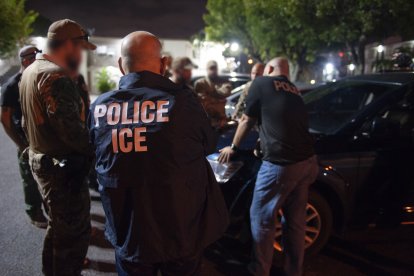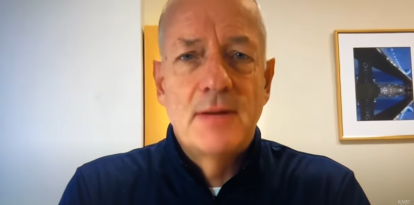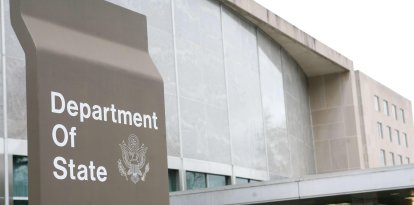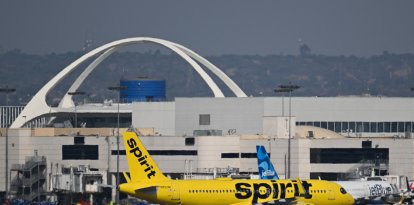Florida enclave becomes a hot spot for Chinese smuggling
Florida's proximity to South American waterways and its strategic location with Cuba make it an ideal place for human smuggling operations.

ICE agents in an operation in Miami, Florida.
Coral Gables, a city in Miami-Dade County, Florida, known for its exclusive Gables Estates neighborhood (considered the most expensive real estate market in the country) is facing an unexpected phenomenon.
In recent months, this South Florida location has seen a marked increase in Chinese immigrant interceptions, highlighting its vulnerability as an entry point for smuggling networks.

Society
Chinese nationals rent wombs from women in California to have children with US passports
Alejandro Baños
The proximity of Florida to South American waterways and its strategic location with Cuba (just 90 miles offshore) make it an ideal location for human smuggling operations.
According to data from US Customs and Border Protection (CBP) the number of Chinese migrants intercepted in Florida has grown significantly since 2020. That year, CBP agents interacted with 406 Chinese nationals; by 2024, the number rose to 723, a 78% increase.
Fox News Digital interviewed Eric Brown, a retired Green Beret and founder of Imperio Consulting, who offered his perspective on this increase. "Coral Gables is adjacent to international waterways, and with Cuba just 90 miles from the coastline of Florida, it just makes sense," Brown explained.
He attributes the choice of this route to the ease of access from South and Central America, in contrast to the more secure northern US border. "It's also a lot easier to fly into a South American country and smuggle across than it is through Canada," he added.
A recent case, also reported by Fox News Digital, illustrates the magnitude of the problem.
In January, days before President Donald Trump's inauguration, Coral Gables police intercepted a U-Haul van and a Toyota following a citizen alert about suspicious vehicles. In the operation, authorities found more than 20 Chinese migrants, a Cuban man and an Ecuadorian woman.
The police chief, Edward James Hudak Jr. noted that "We do believe these individuals were brought here by the water," probably landed near the south end of Coral Gables before being moved into the vehicles.
Later that month, another incident reinforced concerns. Authorities detained 26 Chinese nationals and arrested two suspected smugglers (a Cuban and a Puerto Rican) in two separate vans.
Hudak stressed the importance of citizen vigilance: "For the second time in just over a week, a very alert resident saw suspicious activity which was later determined to be illegal entry into our country.”
Given this scenario, the expert stressed the need for a coordinated response. "More dialogue is needed between the state and national levels on resource sharing and increased aerial technology at the border," he suggested, proposing the use of surveillance drones and technological modernization as initial steps.
The increase in such operations in an enclave as exclusive as Coral Gables highlights how smuggling networks take advantage of Florida's geographic advantages.
As local authorities step up their efforts, the situation calls for a broader strategy to address the complexities of illegal immigration and human trafficking in the Sunshine State.
RECOMMENDATION





















